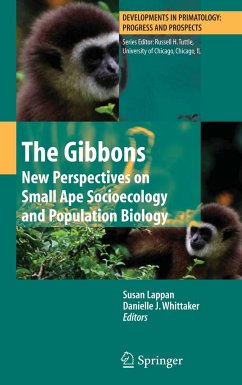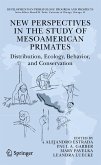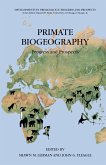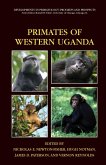It is a great honor to be asked to introduce this exciting new volume, having been heavily involved in the first comprehensive synthesis in the early 1980s. Gibbons are the most enthralling of primates. On the one hand, they are the most appealing animals, with their upright posture and body shape, facial markings, dramatic arm-swinging locomotion and suspensory postures, and devastating duets; on the other hand, the small apes are the most diverse, hence biologically valuable and informative, of our closest relatives. It is hard for me to believe that it is 40 years to the month since I first set foot on the Malay Peninsula to start my doctoral study of the siamang. I am very proud to have followed in the footsteps of the great pioneer of primate field study, Clarence Ray Carpenter (CR or Ray, who I was fortunate to meet twice, in Pennsylvania and in Zurich), first in Central America (in 1967) and then in Southeast Asia. It is 75 years since he studied howler monkeys on Barro Colorado Island in the Panama Canal Zone. It is 70 years since he studied the white-handed gibbon in Thailand.
From the reviews:
"This volume is based on symposia held in 2002 and 2004, which focused on aspects of gibbon behavior, ecology, conservation, and biogeography, plus analyses of their fossil record and interspecific evolutionary relationships. ... it is wonderful to see the range of colleagues from countries 'hosting' gibbons, fully engaged in their study. Summing Up: Recommended. Academic audiences, upper-division undergraduates and above." (E. Delson, Choice, Vol. 47 (3), November, 2009)
"This well-written and insightful edited volume is based on symposia from the 2002 and 2004 International Primatological Society Congresses. Its editors accurately argue that gibbons have not received as much attention as great apes. ... By providing the most up-to-date review of hylobatid biogeography, dietary ecology, social organization, and conservation, this volume does an outstanding job in significantly adding to our knowledge of small apes." (Herbert H. Covert, American Journal of Physical Anthropology, Vol. 143, 2010)
"This volume is based on symposia held in 2002 and 2004, which focused on aspects of gibbon behavior, ecology, conservation, and biogeography, plus analyses of their fossil record and interspecific evolutionary relationships. ... it is wonderful to see the range of colleagues from countries 'hosting' gibbons, fully engaged in their study. Summing Up: Recommended. Academic audiences, upper-division undergraduates and above." (E. Delson, Choice, Vol. 47 (3), November, 2009)
"This well-written and insightful edited volume is based on symposia from the 2002 and 2004 International Primatological Society Congresses. Its editors accurately argue that gibbons have not received as much attention as great apes. ... By providing the most up-to-date review of hylobatid biogeography, dietary ecology, social organization, and conservation, this volume does an outstanding job in significantly adding to our knowledge of small apes." (Herbert H. Covert, American Journal of Physical Anthropology, Vol. 143, 2010)








